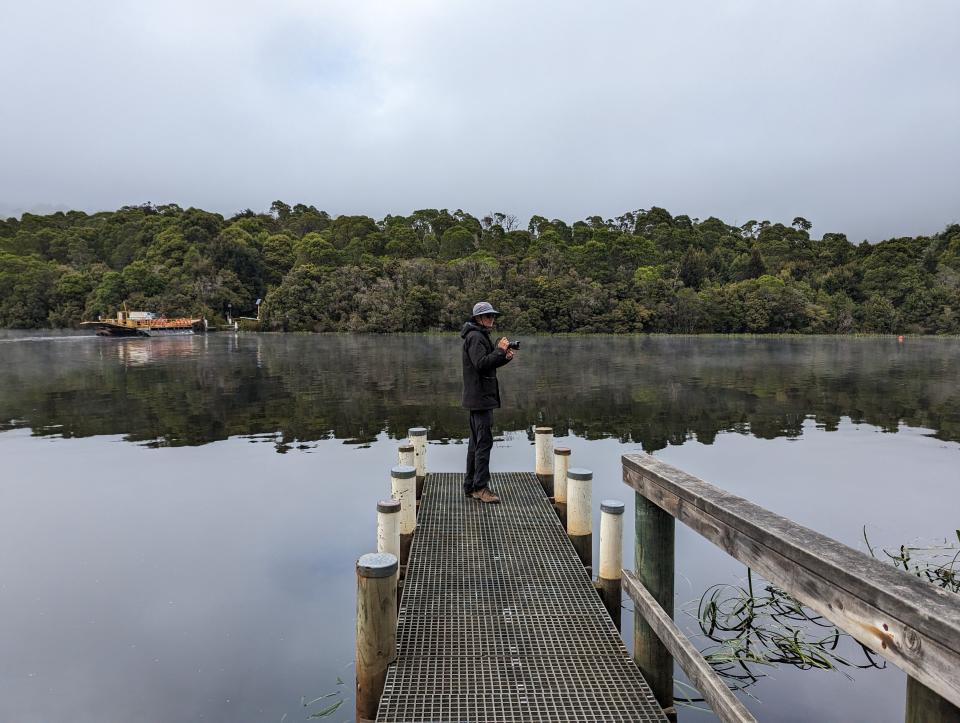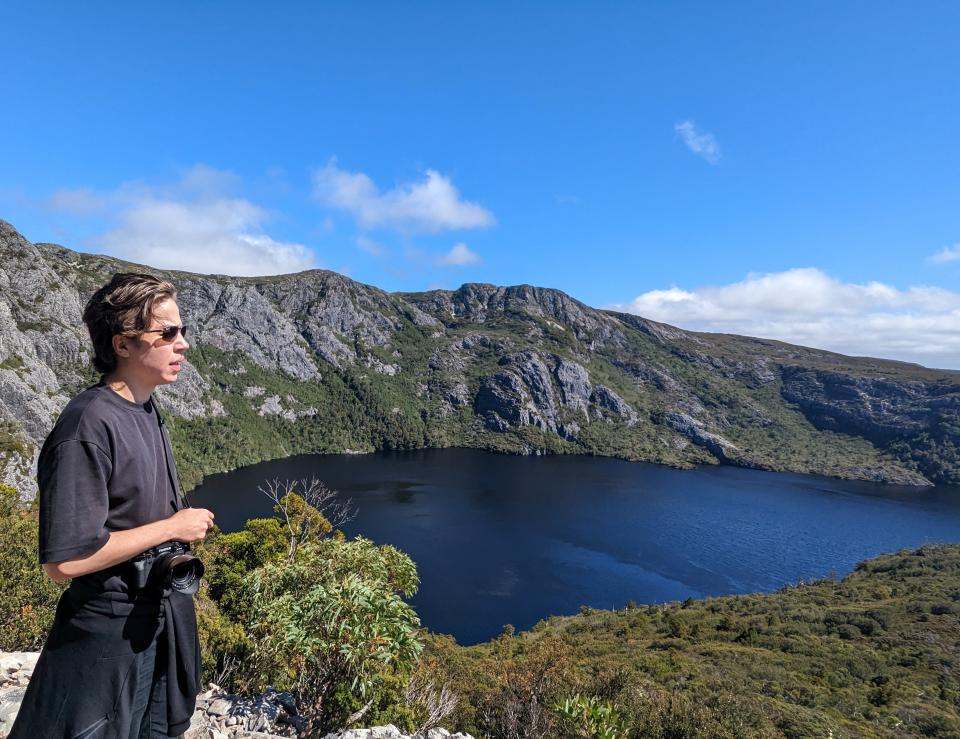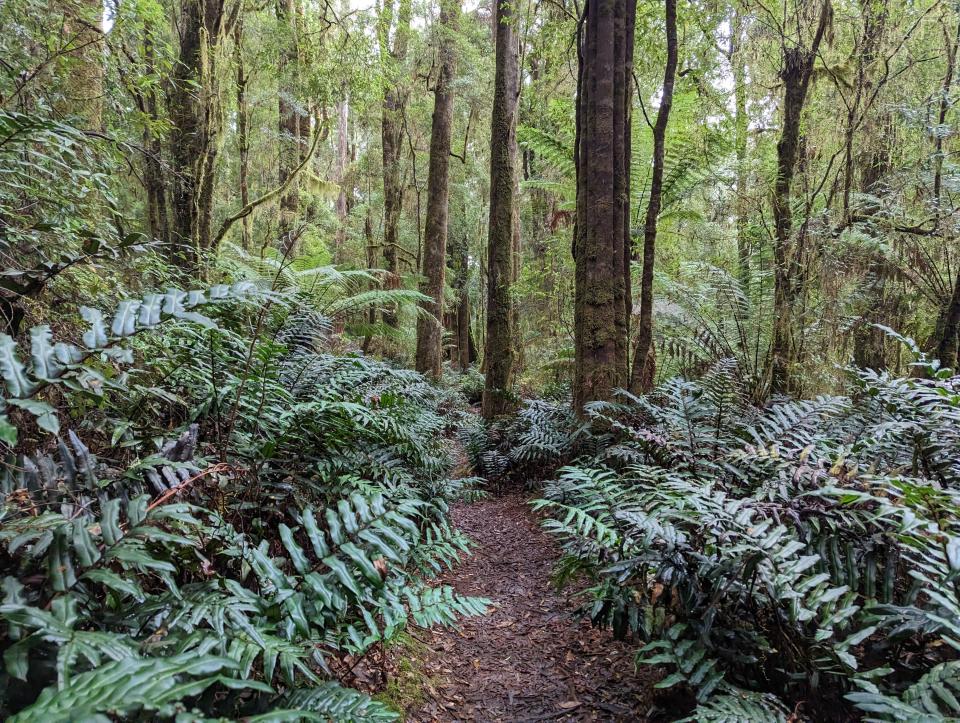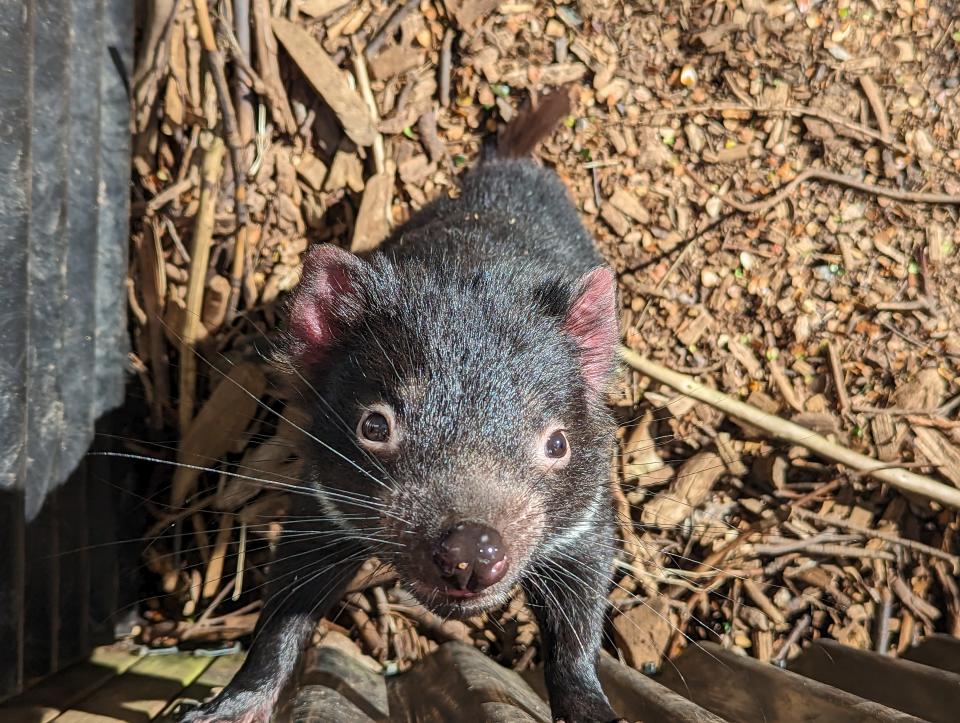Remote, wild and devilishly subversive: Here's why Americans are coming back to Tasmania
If you want to escape it all, there's remote, and then there's Tasmania.
The island off the southeastern coast of Australia is more than 10,000 miles and 15 time zones from New York and an 11-hour ferry ride from Melbourne, the nearest major city.
There were only 3,300 American trips to Tasmania last year, according to tourism officials. But more are on the way in 2023, predicted Sarah Clark, CEO of Tourism Tasmania. "We've seen more interest in Tasmania from North America than we have in years," she said.
One of them is Alissa Musto. She made the one-day trek from Boston to Hobart, the capital city, in December. That's midsummer in the Southern Hemisphere and one of the best times of the year to explore the city's vibrant culture and restaurant scene.
Check out Elliott Confidential, the newsletter the travel industry doesn't want you to read. Each issue is filled with breaking news, deep insights, and exclusive strategies for becoming a better traveler. But don't tell anyone!
"One of the highlights was a wilderness boat tour, where I got an amazing view of the rugged coastline, cliffs, caves, penguins, seals and other wildlife," said Musto, a musician from Boston.
It's the year of the far-cation, with more Americans taking international trips than ever since the start of the pandemic.
"We've seen an uptick in interest in travelers wanting to get out into nature, and Australia's remote island of Tasmania is a perfect choice," said Travis Pittman, CEO of TourRadar.
Bad experiences: When travel goes bad, can you get a vacation do-over?
Tension in the air: Sitting next to an unruly airline passenger? Here's what to do
What to do in Tasmania
Outdoor activities. Roughly half of Tasmania's land area is protected as national parks and reserves. Tasman National Park, with its towering dolerite cliffs, and Cradle Mountain-Lake St Clair National Park, with its diverse hiking paths and mercurial weather, are standouts.
Beaches. Tasmania's rugged coastline is filled with surprises – painted cliffs, powdery white sand, and green seas. There's world-class surfing at Shipstern Bluff, but you can find people surfing at almost all the local beaches. Boat tours, such as Pennicott Wilderness Journeys' Iron Pot Cruise, will get you close to abundant wildlife, including penguins.
Cultural attractions. Hobart is the cultural center of what locals call "Tassie." But its heart is the Museum of Old and New Art, a mostly subterranean art museum built on a winery just outside of town. It's home to entrepreneur David Walsh's $110 million private collection and has been described as a subversive "adult Disneyland."

Why are Americans visiting Tasmania?
"Tasmania's size holds immense appeal," explained Rachel Cooper, an Australia specialist with Red Savannah, a tour operator. "There's very little traffic, and it's easy to get around, making it easy to see so much – even for those with limited time."
So while it takes a while to get there – about 24 hours of flying between the U.S. and Tasmania – once you've arrived, you're close to everything. Tasmania is Australia's smallest state, slightly bigger than Switzerland.

Cooper said there's so much to do it's sometimes overwhelming. Her favorites include rafting, kayaking, biking, caving, diving and rock climbing. She's also a fan of the five-star accommodations, including the Saffire Freycinet, the Henry Jones Art Hotel, and Freycinet Lodge.
You don't have to go far to find hiking trails through ancient fern forests to the mountain peaks where you can be completely alone with your thoughts. One of the most popular day tours in Hobart is Mount Wellington.
An operator like Walk on Kunanyi can take you to the famous Organ Pipes rock formation in a few hours, allowing you to enjoy panoramic views of the city and River Derwent.

"To experience the same diversity in mainland Australia you would need to spend money on flights to get around, and you would need more time," said Cooper.
Although some visitors will plan an independent trip, as Beelen did, it is not for everyone. Driving on the left side of the road can be a little intimidating for Americans coming to Australia, and some of the roads in the national parks can be rough.
'Not much hope for economy class passengers': Airline passengers brace for the big summer squeeze
'I was forced to pay or miss my flight': Airlines are looking for higher profits, which could mean higher fees
Daniel Schoedler, managing director of Premier Travel Tasmania, said many Americans prefer to leave the driving to someone else.
"It takes some time to get used to driving on the other side of the road, and who wants to do that on vacation?" he said. Many visitors also prefer a guided tour, which you can book through a site like TourRadar. It has 58 organized adventures in Tasmania, all of which allow you to avoid driving.
Story continues below.
Tasmania is a wild place
But let's be honest: Tasmania is all about animals. Musto, the musician from Boston, saw them everywhere.
"I thoroughly enjoyed visiting the Bonorong Wildlife Sanctuary, where you get up close and personal with many of Australia's native species, like kangaroos, koalas, and wombats," she said.
One of the highlights of a Cradle Mountain tour is a visit to the Devils @ Cradle Tasmanian devil sanctuary. It's a breeding and conservation facility for three of Tasmania's threatened carnivorous marsupials; the Tasmanian devil, the Spotted-tail quoll, and the Eastern quoll. The famous devils are particularly threatened because of a transmissible parasitic cancer.

Devils are not at all what you expect if you grew up watching Bugs Bunny cartoons and remember the completely unhinged character named Taz. They're about the size of a small dog, solitary and nocturnal. They love to spar with one another in captivity, but they're also shy around people.
Is Tassie worth the trip?
So is it worth spending two full days in the air to get to Tasmania? Even if you just rent a home in Hobart and never leave town, it probably is. The capital has the vibe of a Western U.S. city like Grand Junction, Colorado, or Boise, Idaho.
People in Tasmania are also friendlier than in Australia's big cities (although they drive the same way – but that's a topic for another time). But there is also the feeling of being on the world's edge as you look south into the Tasman Sea, knowing you could sail to the Antarctic in two days. Now that's remote.
There's also the promise that you will return from a Tasmanian adventure with a tale to tell. Maybe it will be seeing monster waves at Shipstern Bluff on the south end of Tassie. Maybe it will be a chance encounter with a wombat in Strzelecki National Park. Or maybe, if you're lucky, on a moonless night at a campsite in Corinna, you will meet a devil.
"Tasmania," said Matt Casey, general manager of Federal Group Tourism, "is all about the stories."
Christopher Elliott is an author, consumer advocate, and journalist. He founded Elliott Advocacy, a nonprofit organization that helps solve consumer problems. He publishes Elliott Confidential, a travel newsletter, and the Elliott Report, a news site about customer service. If you need help with a consumer problem, you can reach him here or email him at chris@elliott.org.
This article originally appeared on USA TODAY: It's 'easy to see so much' in Tasmania: Why Americans are going

